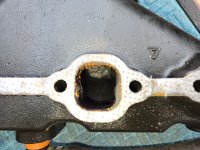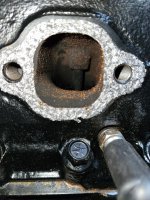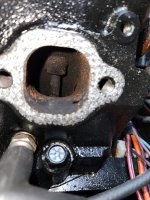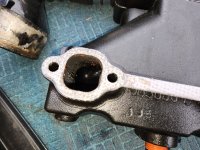So I'll preface this with the following:
I sprayed and wiped the valves and ports with WD for now to stop it from getting worse. I am working for the next 7 days straight so after that I will try to start poking around. Here are some photos of the port side manifold and head ports, they are paired to each other.






Am I on the right track or should I turn to the long-block itself too?
- Engine is a fresh rebuild, see my other thread for that journey
- Manifold and elbows are brand new Mercruiser
- I checked all sealing surfaces for straightness prior to installing
- This is what happened on the old engine it seems though those had a confirmed gasket leak, I haven't tested these yet now.
- The block and heads were magnafluxed and pressure tested when assembled to find leaks... So it seems isolated but coincidental.
I sprayed and wiped the valves and ports with WD for now to stop it from getting worse. I am working for the next 7 days straight so after that I will try to start poking around. Here are some photos of the port side manifold and head ports, they are paired to each other.






Am I on the right track or should I turn to the long-block itself too?




















